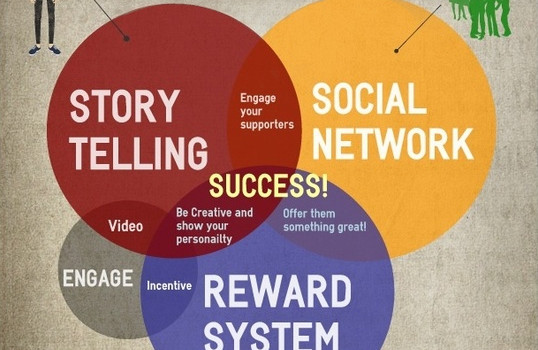There has been much debate in regards to the importance of a marketing strategy for crowdfunding campaigns. Studies show that having a sound marketing strategy in place could either make or break your campaign. Today, considering the lack of information that has recently been leaving investors with little to work with when they are evaluating whether to take a stake in the business, it is even more critical to have an informative and far reaching marketing strategy. Spreading the word of your campaign will depend on who you are trying to reach, as different audiences need to be targeted in different ways.
In general, we can divide your audience into three broad groups that should be targeted in any marketing strategy. There are three broad groups that should be integrally involved in your marketing strategy: personal relations, similar stakeholders, and social media followings.
Personal Relations
This first group, “personal relations”, consists of family and friends, and others you might have some sort of close relationship with. You would need to approach these people differently as opposed to how you approach a stranger.
Within your personal relations, you will have further categories like your close friends, or business colleagues. Chances are the ones closest to you will already know about your campaign, whereas others may simply know the general idea but not the nitty gritty details.
When outreaching anyone in this group, it is important to stay genuine and honest. No one likes to be approached after years of no-contact, with a request to donate money. That’s why it is critical to maintain good connections, or re-kindle any relationships you may have prior to introducing your campaign. While outreaching personal relations is relatively straightforward, you need to remember to give yourself enough time to do so, and start planning your outreach in advance. An example of this would be in online communities like to play mobile bingo, these are great places to practice building up personal relations with like-minded people.
Similar Stakeholders
When marketing to “similar stakeholders”, you are essentially considering people, organizations, and/or communities that would relate to your project. This group will be integral to the success of your campaign, since they are already somewhat tangentially invested in your idea. For example, if you are creating an app to research scuba diving conditions, your similar stakeholders would include dive shops, recreational activity organizations, diver clubs and online forums, resorts that offer scuba diving as an activity, tour agencies and more.
The key here is to highlight how your campaign idea will particularly benefit them. These stakeholders might be willing to publicize your campaign on their social media pages, or put up flyers on their bulletin board to spread word to their clients. Eventually, the hope is that these similar stakeholders will invest in your idea or even form some sort of business partnership if they are indeed benefiting from your project. Thus, identifying those groups that have similar goals as you is extremely advantageous in terms of marketing.
Social Media Followers
Your “social media following” is just that – all your contacts through various connections, aggregated into that never ended stream of social media. Even though statistics show that only 1-5% of any social media fanbase will actually donate, social media is a great way to spread word of your campaign. Having a bigger, more relevant following will increase your chances of success. If you don’t already have a social media base, you need to build one. Then you will have to make sure your following is constantly engaged and remains loyal.
There are many different ways to engage your social media following. For example, video is a powerful visual tool, and can help viewers perfectly visualize your campaign. Creating and sharing topical videos is a great way to publicize your ideas. Twitter conversations allow you to reach people from all parts of the world. If you go beyond the realm of simply re-tweeting, you will be soon connect with people on a deeper level. Create hashtags that are relevant to your campaign, and give your opinion in a timely manner. This will make you a respected voice in your field, thus leading to a greater chance that people will support you when the time comes. Another great option is to use tools like HootSuite will allow to post on various social media platforms simultaneously, and stay well connected. A group often overlooked within Social Media are bloggers. Before your campaign, look up a significant number or bloggers or blogs who seem to attract an audience that is relevant to your campaign. Approach them with an intriguing pitch or reason to want to cover your campaign. You could even offer to write a guest post to be featured on their blog. Blogs are the perfect way to tap into an already established following, that is different from your own. Even if social media doesn’t yield high revenues in terms of actual donations, your efforts will allow for major publicity gain through various avenues.
When planning your marketing strategy, it is vital to cover these three bases. Always remember to be informative, and available to answer follow-up questions whenever they pop up. It’s important to be approachable (and not come across as a scammer!), so that any potential funders can stay informed about your campaign should they have any concerns. Thus, being organized, informative and approachable, paired the above tips should help your marketing efforts result in increased conversion.




Leave a Reply